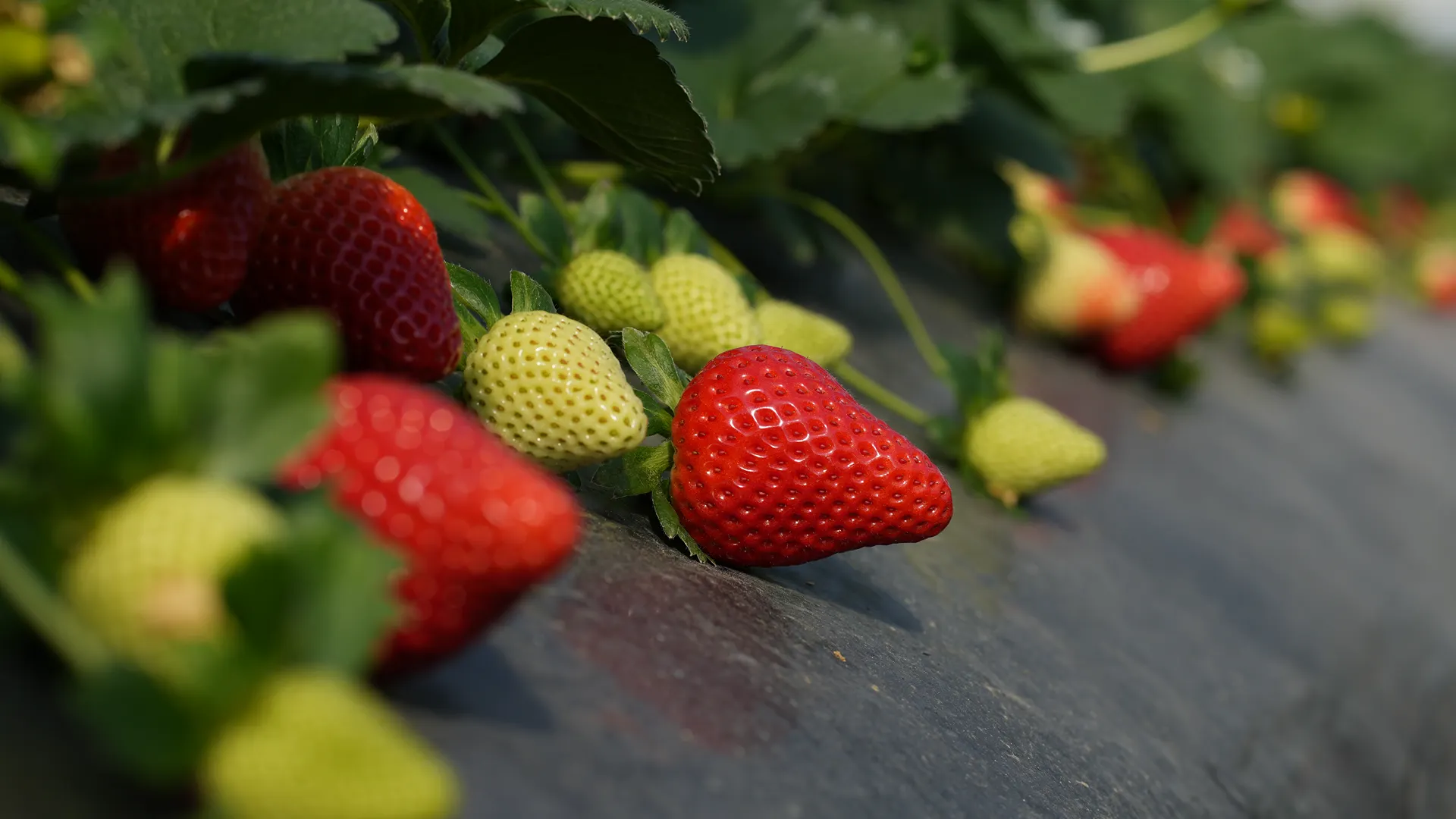The area planted with blueberriesin Morocco has increased more than 15 times since 2005, when the first plantations of blueberries began. More than 15 years later, its privileged location and political-environmental conditions have steadily increased its annual production.
Located in North Africa, in a privileged position with access to Asian, European and African markets, Morocco has gradually built a reputation for its production of blueberries.
In 2005, a handful of producers started growing blueberries. For the first ten years, annual growth was small but steady, as local producers became familiar with this new berry, its behaviour and the demands it had, at the time, in the country's main production area: Loukos Gharb, in the north of the country.
However, since 2015, growth has been exponential. The increase in area from year to year has exploded, reaching a growth of up to 500 hectares per year. This was driven by the arrival of foreign capital in Morocco, which, together with now experienced producers, increased the planting of the fruit in Loukos Gharb and created new growing areas in Agadir, in the centre-north of the kingdom, and Dakhla in the south. By 2020, they have managed to produce 35,100 tonnes of blueberries, 19 times more than in 2005.
Although 80% of Moroccan berry plantations are less than five hectares in size, an agricultural supply market has developed to supply this growing industry. Agrochemical companies, technologies and agricultural facilities have come to the African country as a result of foreign investments that see the following advantages in Morocco.
RESOURCES AT YOUR FINGERTIPS
Climate, labour and water are resources that are not lacking in the African country, which only benefit the production of blueberries.
Loukos Gharb enjoys a Mediterranean climate, while moving southwards the temperatures rise and the chances of rainfall decrease in the other production areas of Agadir and Dakhla. In general, minimum temperatures reach between 5 and 15°C, creating a sufficient temperature difference with the day to create great-tasting fruit.
The berry boom in the country can also be explained by thehigh availability of labour at a 'reasonable' value, as Amine Bennani, president of the Moroccan Association of Berry Growers (AMPFR), describes it in Blue Magazine. The kingdom has a young and experienced workforce with a wealth of agricultural know-how. Such is the availability that, during the Spanish season, some 2,000 workers cross the Mediterranean to work in the fields of southern Europe.
Finally, unlike other countries, climate change has not yet wreaked havoc in the region. Loukos Gharb and Dakhla have water available for agricultural use, while in areas where it is scarcer, such as Agadir, there is infrastructure to irrigate fields through desalination plants.
LOCATION IS EVERYTHING
Although not immune to the consequences of the pandemic, Morocco's geographical location favours it for exporting fresh fruit to high-value markets. "It takes four days from the farm to the consumer in Europe, six days to Russia," said Bennani of AMPFR.
The growth of blueberryin Morocco has favoured the export of fresh fruit over frozen fruit. The quality of its fruit has gained a foothold in the European market, which receives around 90% of its production, with its main destinations being Spain, England, Holland, Germany and France.
Its location on the globe also gives advantages to reach markets in North America (USA, Canada) and Asia (mainly China) with fresh and frozen products. It was these exports that were most affected by the pandemic, since, following the closure of airspace, loads of blueberriescould not be shipped from Casablanca airport to Asian markets.
All the progress in the international market of blueberrieshas been helped by trade agreements reached with the European Union, Turkey, the United States and the United Arab Emirates, for example. These agreements are not only an economic boost, but also a guarantee of the quality of their product, as they have to comply with strict standards such as the European one.
SUPPORT NETWORKS
High-capacityports , extensive roads, water infrastructure and fiscal benefits are part of the socio-political framework that the Kingdom of Morocco has promoted for the development of agribusiness in the country.
In addition, berry production is associated with the Interproberry Federation, which in turn promotes Moroccan berry production through the Moroccan Association of Berry Producers (AMPFR) and the Moroccan Association of Packers-Exporters (AMCEF).
The country has 1800 kilometres of roads and one of the largest ports in Africa, Tangier-Med, near Agadir. In addition to these benefits, there is anexemption from taxation on agricultural supplies.
THE CURRENT SITUATION
The pandemic affected not only exports to more distant destinations by air, but also the working dynamics within farms, which had to comply with the Kingdom of Morocco's strict sanitary measures.
However, the Moroccan industry remains ambitious. Without falling behind global trends, they are trying to increase the country's varietal availability, so that blueberriesare available all year round. Southern areas, such as Dakhla, start in October, while northern areas begin in January, peaking in March and ending in July. Now, foreign companies are working to create crops in the highest parts of the country that can start producing in August, closing an annual production cycle.
Technical practices such as the use of substrates in new crops in the south of the country are surprising with their quality results.
More information on the progress and opportunities in this market will be discussed at the 22nd International Blueberry Seminar Morocco on 9 June at the Hyatt Regency Hotel in Casablanca.
Source: Blueberries Consulting
Blueberries Consulting is part of the global network of Italian Berry









